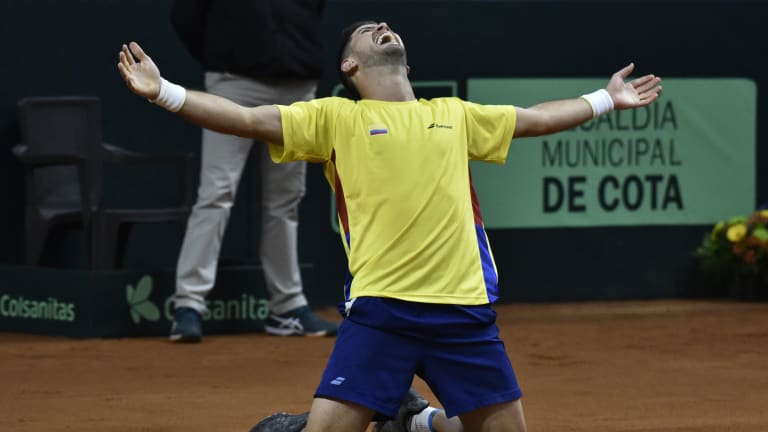Davis Cup
Even after three gloomy years, the Davis Cup spirit is very much alive among fans and players
By Feb 06, 2023Davis Cup
Argentina reaches Davis Cup Final 8 after tense win over Finland
By Sep 15, 2024Davis Cup
Stan Wawrinka's vintage clincher for Switzerland among Davis Cup qualifying highlights
By Feb 05, 2023Davis Cup
New-look U.S. Davis Cup team rolls to victory in 2023 Qualifier
By Feb 04, 2023Top 5 Stats of the Year
Stat of the Year, No. 2: Carlos Alcaraz’s Double Surface Slam for the ages
By Dec 18, 2025Social
Iga Swiatek meets first scholarship winners from namesake foundation
By Dec 18, 2025Next Gen ATP Finals
From hitting partner to headliner: Rafael Jodar shocks top seed Tien in Jeddah
By Dec 17, 2025Opinion
Carlos Alcaraz moved up with Juan Carlos Ferrero—now, he moves on without him
By Dec 17, 2025Top 5 Stats of the Year
Stat of the Year, No. 3: Novak Djokovic, serving up titles for 20 years and counting
By Dec 17, 2025Coach's Corner
Carlos Alcaraz announces shock split from longtime coach Juan Carlos Ferrero
By Dec 17, 2025Even after three gloomy years, the Davis Cup spirit is very much alive among fans and players
Can the storied team competition go home—and away—again?
Published Feb 06, 2023
Advertising
Advertising

With this reaction, you'd think Mejia won a Grand Slam title. Nope—he won the opening rubber for Colombia in its Davis Cup qualifier against Great Britain.
© Getty Images
Advertising
Advertising

The crowds, and their reactions, say it all about Davis Cup.
© Getty Images